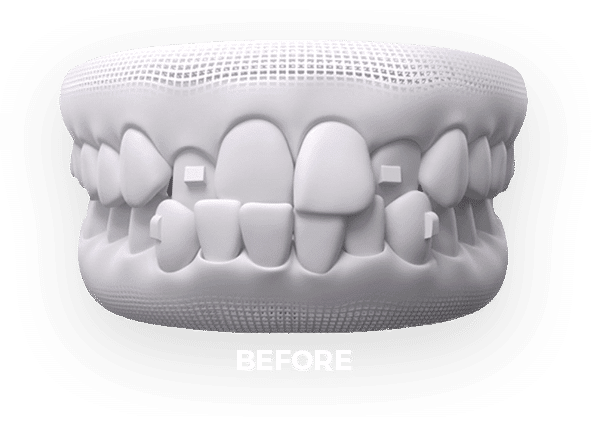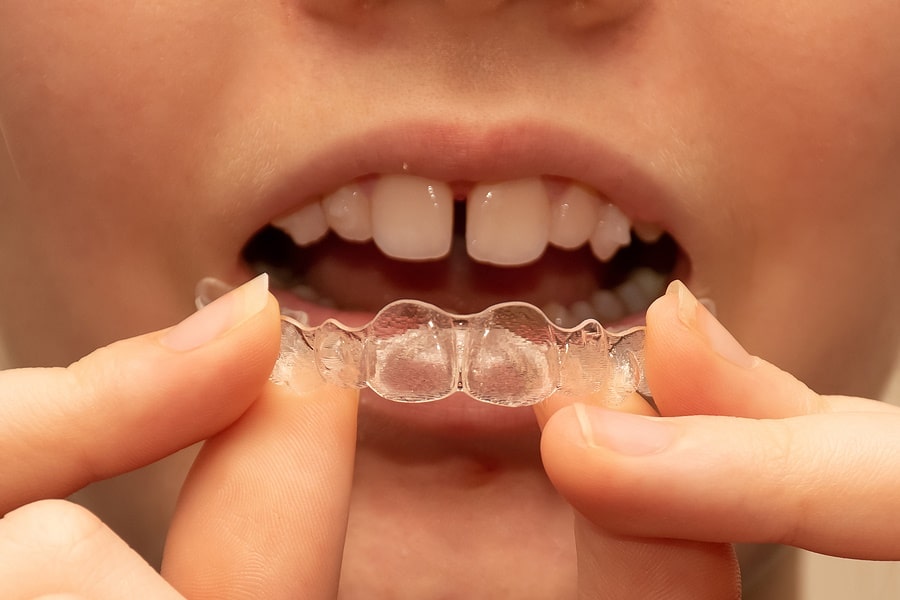Success Stories: How Invisalign Changed Lives and Enhanced Confidence
Success Stories: How Invisalign Changed Lives and Enhanced Confidence
Blog Article
Invisalign vs. Traditional Braces: Which Choice Is Right for You?
When thinking about orthodontic treatment, the option between Invisalign and traditional dental braces provides several vital elements that merit cautious evaluation. Invisalign uses a very discreet option with detachable aligners, while typical braces offer a more noticeable yet efficient service for extreme imbalance. Each option encompasses distinctive benefits and disadvantages connected to aesthetic appeals, comfort, therapy period, and expense. Comprehending these nuances is essential for making an educated choice that straightens with your individual preferences and way of living. The question remains: which choice will ideal meet your orthodontic requirements and expectations?
Summary of Treatment Alternatives

In contrast, standard braces contain metal brackets and cables that are adhered to the teeth. This technique uses continuous stress gradually to attain placement. While effective for complex orthodontic issues, typical dental braces need normal sees for modifications and can posture difficulties in preserving oral hygiene because of the problem of cleaning around cords and braces.
Both options have their qualities, and the option usually pivots on details oral conditions, way of living preferences, and person compliance. Eventually, speaking with an orthodontic professional is essential for figuring out the most appropriate therapy plan tailored to individual demands. Understanding the nuances of each choice can considerably influence the total success of orthodontic therapy.
Visual Considerations
A significant aspect influencing the selection in between Invisalign and traditional dental braces is the visual appeal each therapy provides. Invisalign aligners are crafted from clear plastic, making them basically unnoticeable when put on. This very discreet look is particularly interesting teenagers and adults who might really feel uncomfortable about their orthodontic treatment. The ability to maintain a natural smile throughout the alignment process can dramatically enhance the individual's confidence in social and specialist setups.
On the other hand, standard dental braces contain metal braces and cords, which can be extra recognizable. While improvements in orthodontic technology have led to the development of smaller sized braces and tinted elastics, standard braces still keep a more conspicuous account. For some people, the presence of braces might hinder them from looking for essential treatment.
Inevitably, the choice between Invisalign and traditional braces might rest on personal preferences pertaining to looks. Clients that focus on discernment typically lean toward Invisalign, while those that are less worried regarding visibility might decide for traditional dental braces. Comprehending the aesthetic implications of each alternative is essential for making an informed choice that aligns with one's lifestyle and preferences.
Convenience and Convenience

In terms of ease, Invisalign aligners are detachable, making it possible for individuals to enjoy their preferred foods without limitation and maintain optimal oral hygiene. Brushing and flossing are streamlined, as the aligners can be obtained throughout these routines, whereas standard dental braces need careful navigating around cables and braces.
In comparison, standard braces require regular modifications, making them much less practical for those with hectic routines. In general, the convenience and benefit of Invisalign make it an appealing option for numerous people looking for orthodontic treatment.
Therapy Duration and Efficiency
While both Invisalign and traditional braces are effective in dealing with dental misalignments, the duration of therapy can vary dramatically in between both alternatives. Typically, Invisalign therapy can take anywhere from 12 to 18 months, depending on the intricacy of the instance. The clear aligners function by progressively shifting teeth right into their desired settings, and routine follow-ups with an orthodontist help make sure progress continues to be on the right track.
On the other hand, typical braces commonly require a longer dedication, normally varying from 18 months to 3 years. This results from their fixed nature and using braces and cables, which can be much more reliable for complicated situations and severe imbalances (Invisalign). The therapy efficiency of conventional braces is well-documented, as they enable accurate modifications and better control over tooth activity
Eventually, the selection between Invisalign and traditional dental braces may rest on both the anticipated treatment period and the details oral concerns available. Consulting with an orthodontist is essential, as they can provide tailored suggestions based upon individual needs, guaranteeing the selected method aligns with wanted durations and outcomes.
Price Contrast and Insurance Choices
Price plays a considerable duty in the decision-making process for individuals taking into consideration orthodontic treatment, whether deciding for Invisalign or traditional dental braces. Generally, the price of Invisalign varieties from $3,000 to $8,000, while typical dental braces click this link commonly set you back in between $2,000 and $6,000. Elements influencing these costs include the intricacy of the situation, the duration of treatment, and geographical location.
Insurance policy coverage can substantially affect out-of-pocket expenses. Numerous dental insurance policy plans offer partial insurance coverage for orthodontic therapies, yet the specifics can differ widely. It is important for people to review their insurance plan to establish the level of coverage for either choice. Generally, traditional braces might be much more often covered by insurance plans contrasted to Invisalign, which some insurers classify as an aesthetic procedure.
In addition, a number of orthodontic techniques supply flexible repayment plans, making both therapy choices extra accessible. People need to ask about prospective financing alternatives and discount rates for upfront repayments. Examining the total expense, consisting of insurance coverage benefits and layaway plan, is necessary for making an informed choice that aligns with both aesthetic choices and budget considerations.

Final Thought
In summary, the choice in between Invisalign and typical braces hinges on numerous aspects, including visual preferences, comfort, treatment duration, and price. Invisalign offers a very discreet, detachable alternative that helps with dental hygiene and dietary versatility, while standard dental braces may be more appropriate for intricate oral problems and frequently come at a lower rate factor. Eventually, appointment with an orthodontist is important to examine specific conditions and determine one of the most proper therapy option for accomplishing optimum oral positioning.
When taking article source into consideration orthodontic therapy, the selection between Invisalign and standard braces provides several important variables that warrant cautious evaluation.Comparing Invisalign and traditional dental braces reveals distinctive therapy alternatives for orthodontic correction.While both Invisalign and typical dental braces have a peek here are efficient in correcting dental misalignments, the period of therapy can vary substantially in between the two options.Cost plays a substantial role in the decision-making process for individuals thinking about orthodontic therapy, whether choosing for Invisalign or typical dental braces.In summary, the option in between Invisalign and typical dental braces hinges on numerous variables, consisting of visual choices, convenience, treatment period, and expense.
Report this page